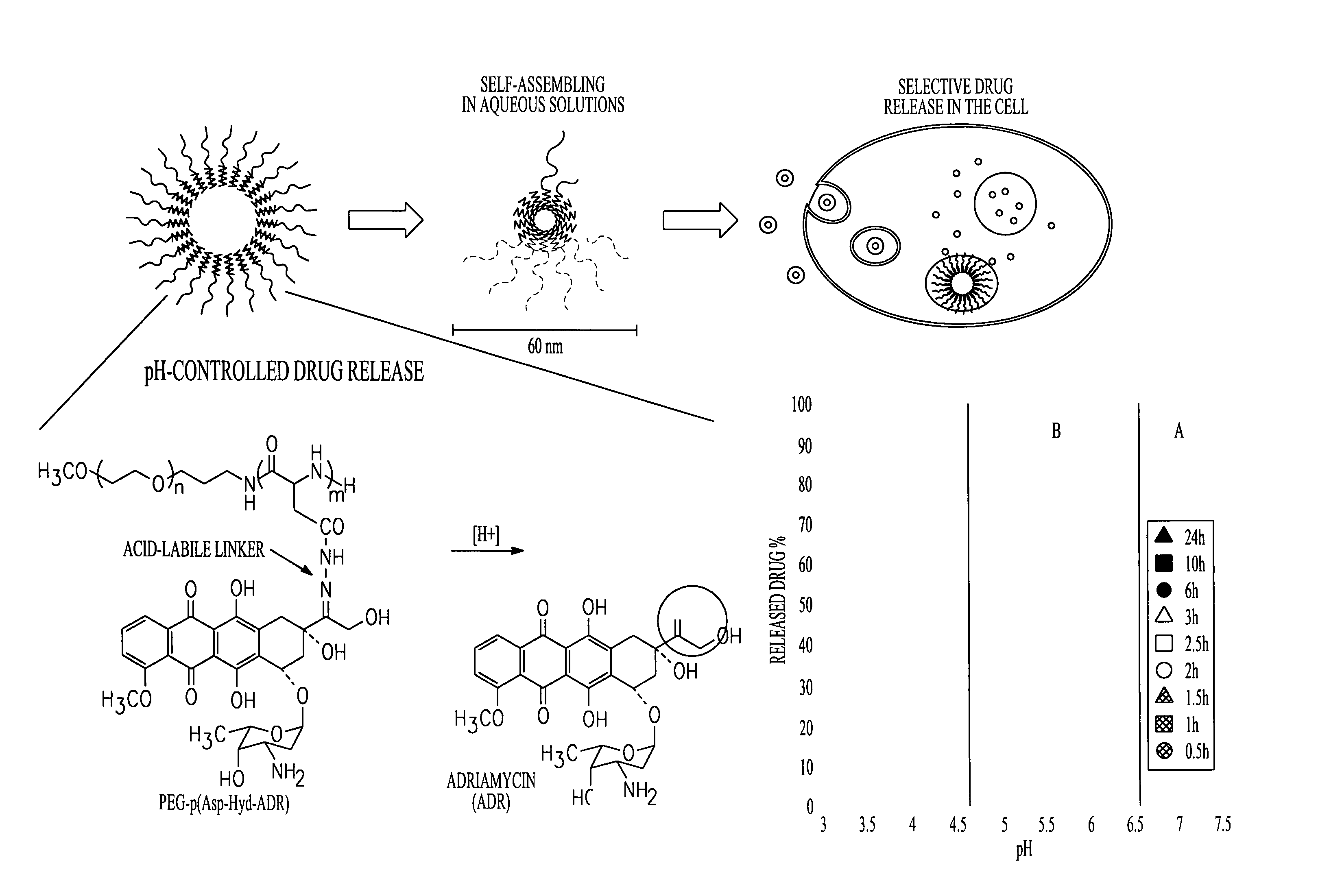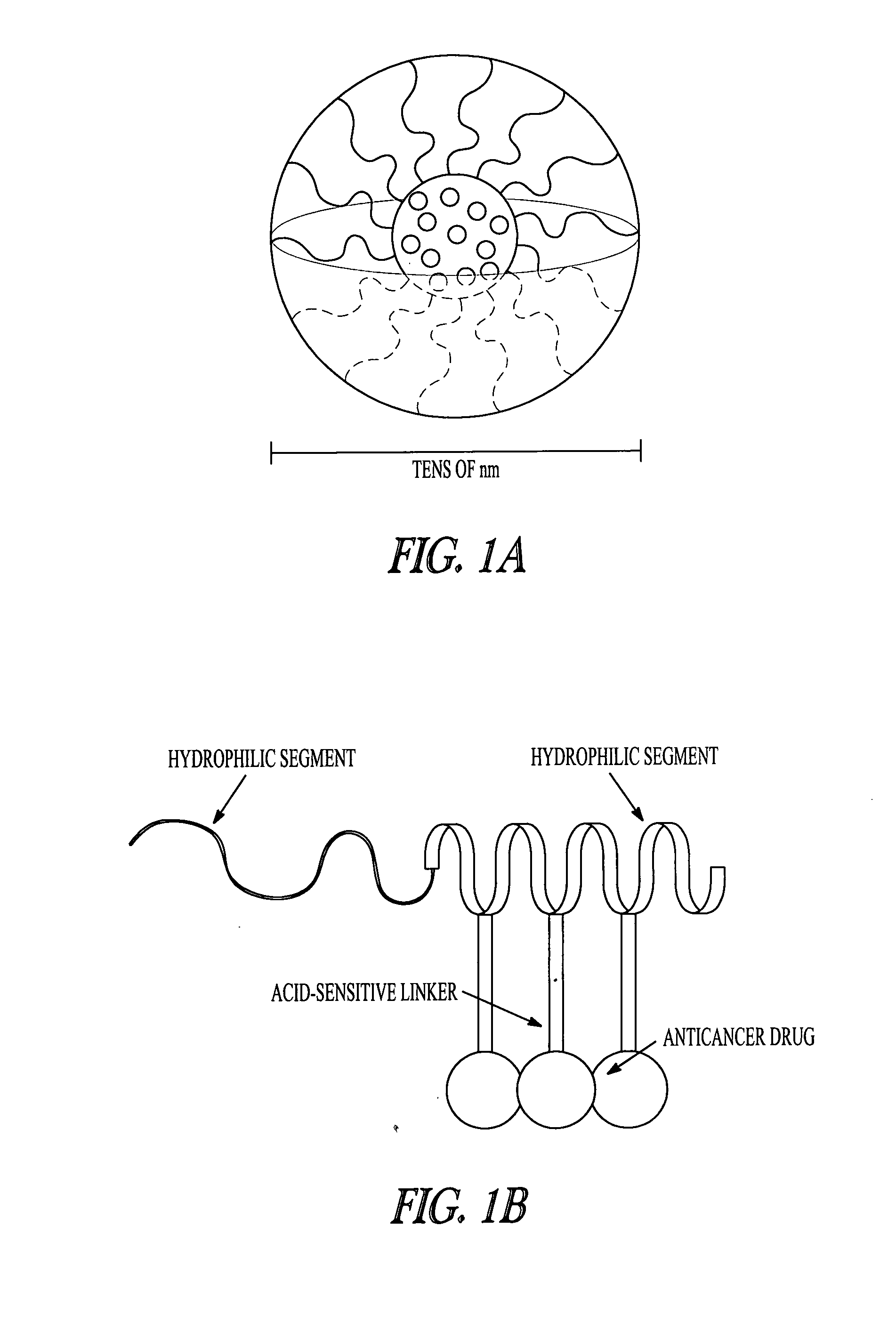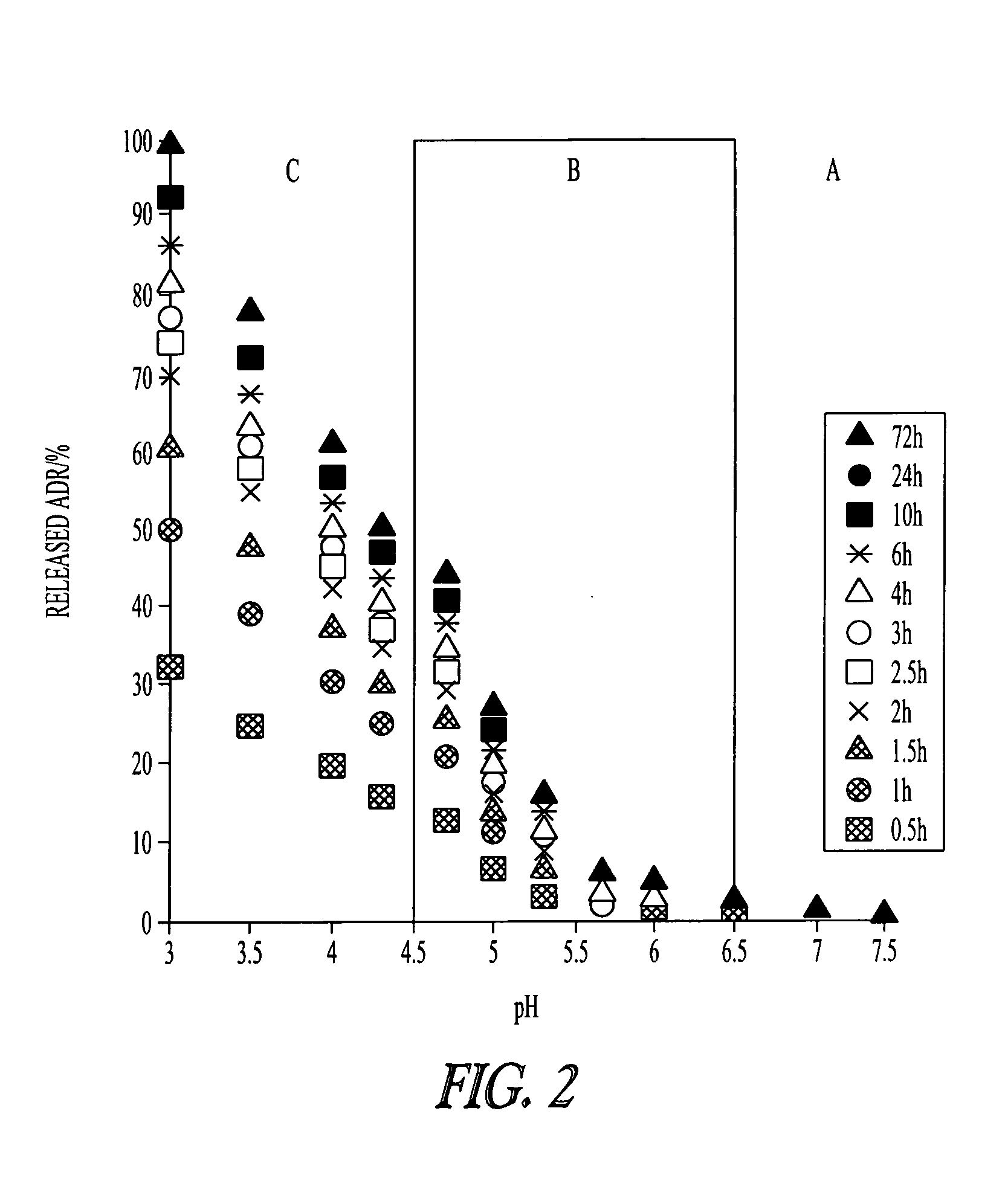Polymeric micelles for combination drug delivery
- Summary
- Abstract
- Description
- Claims
- Application Information
AI Technical Summary
Benefits of technology
Problems solved by technology
Method used
Image
Examples
example 1
Preparation of Mixed Drug Micelles for Combination Chemotherapy
Introduction
[0119]Controlled drug delivery systems containing multiple drugs can avoid unwanted changes in pharmacokinetic profiles and increased risk of side effects by achieving efficient and safe methods for combination chemotherapy. In this Example, a “chemically mixed micelle” is described that can deliver doxorubicin (DOX; a widely used anthracycline) and wortmannin (WOR; a phosphatidylinositol 3-kinase inhibitor) to tumor tissues simultaneously. DOX and WOR were conjugated to α-methoxy-poly(ethylene glycol)-poly(aspartate hydrazide)(1-2) through acid-sensitive linkers in various mixing ratios. For the α-methoxy-poly(ethylene glycol)-poly(aspartate hydrazide) preparation, see Y. Bae et al., Bioconjugate Chem. 16: 122-30 (2005); and Y. Bae et al., Angew. Chem. Int. Ed. 42: 4640-3 (2003). The micelles were designed to selectively release the drugs in the cell interior by reacting to a pH decrease in the endosomes and...
example 2
Intracellular Drug Delivery by Polymeric Micelles Responsive to Intracellular pH Change
[0133]The recent development of biomolecular devices that function within the living body has required the integration of capabilities for sensing in vivo chemical stimuli, generating detectable signals, and effecting suitable responses into a single molecule or molecular complex. In particular, biopharmaceutical systems which interact with intracellular components or events such as ions, proteins, enzymes, and pH changes are becoming important for implementing programmed functions that respond to signatures of the body. Supramolecular chemistry is attracting attention as it offers methods for assembling different constituents capable of structural and dynamic changes into single molecules. Herein we demonstrate the intracellular localization of a pH sensitive supramolecular assembly that changes its structure and fluoresces when activated to induce mortality of malignant cells.
[0134]There are man...
example 3
Therapeutic Agent Linkages
[0164]Reference is made to FIGS. 5-16, where certain aspects and embodiments of the invention are illustrated. It should be noted that in the figures, doxorubicin and doxorubicin conjugates may be illustrated, but the doxorubicin may be exchanged with many other carbonyl-containing anticancer agents, for example, apicidin, cucurbitacin, radicicol, and wortmannin, to name a few, which are also illustrated in Scheme 3.1 below.
Each of the therapeutic agents illustrated in Scheme 3.1 has accessible and reactive ketones and can be directly condensed with a hydrazide terminated side chain of a polyamide polymer as described herein. Certain therapeutic agents, such as 17-allylamino-17-demethoxygeldanamycin (17-AAG) and paclitaxel, require minor chemical modifications to provide a linker that can link the drugs to hydrazones of polyamide side chains. For example, the macrolide 17-AAG, illustrated below, bears a urethane group at C7. The amine of the group may be su...
PUM
| Property | Measurement | Unit |
|---|---|---|
| Fraction | aaaaa | aaaaa |
| Molar mass | aaaaa | aaaaa |
| Molar mass | aaaaa | aaaaa |
Abstract
Description
Claims
Application Information
 Login to View More
Login to View More - R&D
- Intellectual Property
- Life Sciences
- Materials
- Tech Scout
- Unparalleled Data Quality
- Higher Quality Content
- 60% Fewer Hallucinations
Browse by: Latest US Patents, China's latest patents, Technical Efficacy Thesaurus, Application Domain, Technology Topic, Popular Technical Reports.
© 2025 PatSnap. All rights reserved.Legal|Privacy policy|Modern Slavery Act Transparency Statement|Sitemap|About US| Contact US: help@patsnap.com



